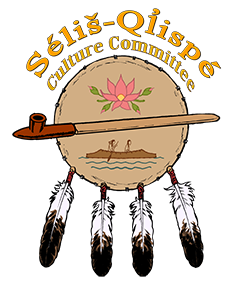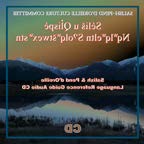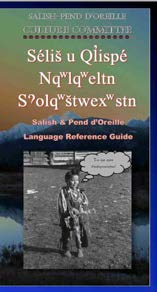Uncategorised
The Culture Committee is an important staple for the survival and renewal of our people. We hope this site is useful and helps strengthen the bond to our language, our traditions and our past.
- Qe es nte qeqs čšt̓im qeqs k̓ʷłqeyxʷm n̓e taqs hoy taqs oo̓st łu sqlix̣ʷlč̓musšn.
- The salish-Pend d'Oreille Culture Committee seeks to preserve, protect and perpetuate the living culture and traditional way of life of our people.
History & Organization - Tsq͏̓i Smim̓iʔ u Qe Nk̓͏ʷul̓mn
The Salish - Pend d' Oreille Culture Committee was first created in 1974-75 in response to the urgent concern of many traditional elders that we need to take strong action to ensure that out culture would be carried on by younger generations, and by the generations yet to come. Since that time, we have worked hard in many areas to ensure that both our language and way of life will always survive and flourish.
Qe Sck̓͏ʷlk̓͏ʷul̓ - Activities
- Traditional tribal cultural events and activities
- Annual Bitterroot Dig & Feast
- Salish Language Classes
- History & Culture Archives. Photographic Archives and Historical Collections management
- Tribal History and Ethnogeography Projects
- Consultation / advising federal, state, and local governments
- Bi-annual visits to Medicine Tree
- Recording elders' oral histories and cultural knowledge
- Cultural orientation for Tribal and non-Tribal departments and programs
- Public educational outreach and presentations
- Development of Language and Cultural Learning Resources and Materials
- Gathering of Traditional Plants & Foods
Usšneɫxʷ - Longhouse
The Salish Longhouse - is an important center of tribal cultural life. Use of this building is strictly reserved for traditional activities and tribal use. The following is a prioritized list of allowed uses of this space:
- Wakes and funerals
- Memorial feasts
- Traditional cultural activities (e.g., Jump Dances and Bitterroot Feasts) and SPCC events
- Salish-Pend d'Orille Elders Cultural Advisory Council meetings
- Salish Language & Culture Camp
- Tribal meetings and use by other tribal departments
P̓iip̓x̣͏ʷot - Tribal Elder and Contributors
Rita Adams
Mary Jane Charlo
Sophie Haynes
Stephen Smallsalmon
Shirley Trahan
Vi Trahan
Lucy Vanderburg
Janie Wabaunsee
Maxine McDonald
*Felicite McDonald
*Noel Pichette
*Patrick Pierre
*Hank Baylor
*Dolly Linsebigler
*Louie Adams
*Clara Bourdon
*Eneas Vanderburg
*Clara Charlo
*Virgie Brockie
*Joe Vanderburg
*Andy Woodcock
*Dorthy Woodcock
SQCC Staff Members
Antoine Incashola - Director
Shirley Trahan - Senior Translator & Language Advisor
Sadie Peone - Historical Collections & Office Manager
Chaney Bell - Salish Language Coordinator
Steve Arca – Séliš-Ql̓ispé Language Teacher
Cierra Jeppesen – Séliš-Ql̓ispé Language Teacher
Richard Alexander - Keeper of the Longhouse
Thompson Smith - History & Geography Projects
Nalani Linsebigler - Receptionist
Publications
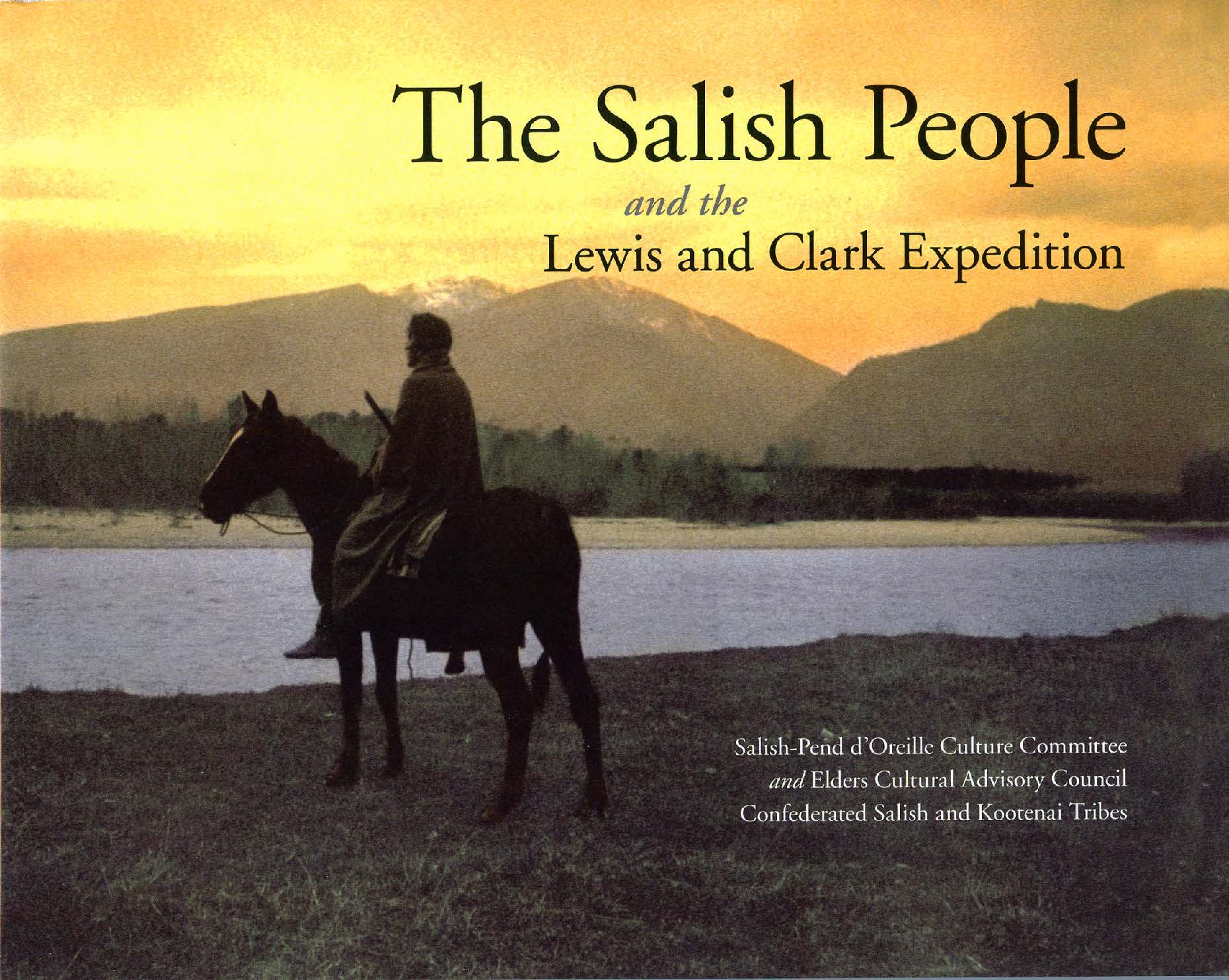 The Salish People and the Lewis and Clark Expedition198 pages. 8X10 hardback. An in-depth examination of the events and historical significance of the Salish People’s encounter with the Lewis & Clark expedition. “[A] remarkable and beautifully produced book. . . . It flips the standard lens of history to portray a critical American historical event from the perspective of the Salish people of western Montana. . . . Perhaps the most important reason the authors were able to write such a compelling narrative is the three decades of cultural preservation work, including extensive interviews with tribal elders that have been recorded and stored in the tribal community. This truly beautiful book is a community-based project.”—David R.M. Beck, Oregon Historical Quarterly
$29.95 - Hardcover $24.95 - Paperback |
|
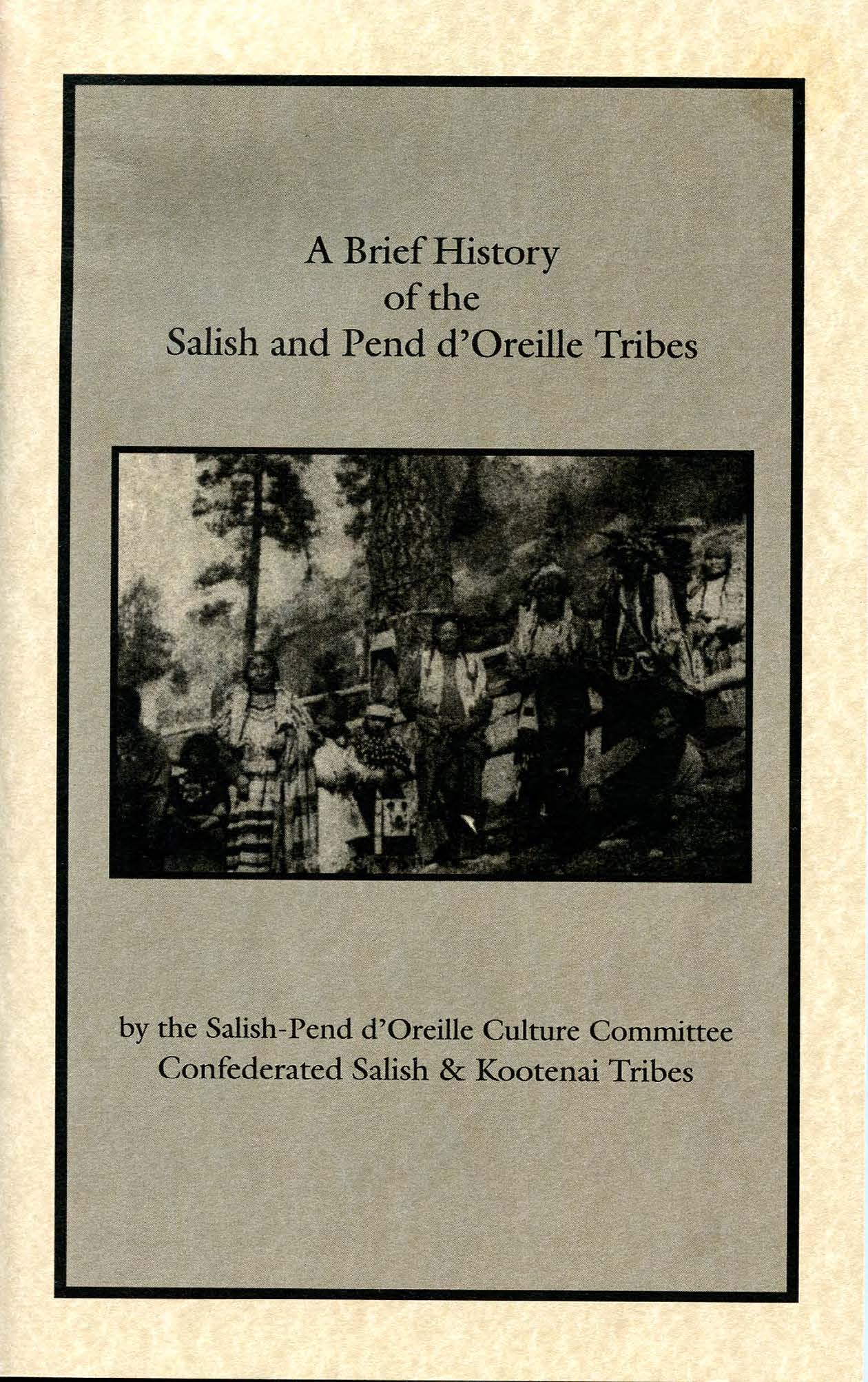 A Brief History of the Salish and Pend d’Oreille Tribes70 pages. 8.5X5.5 The book offers readers an authoritative, concise overview of major aspects of the history of two major tribes of what is now Montana, from a tribal perspective
$7.50 |
|
|
|
|
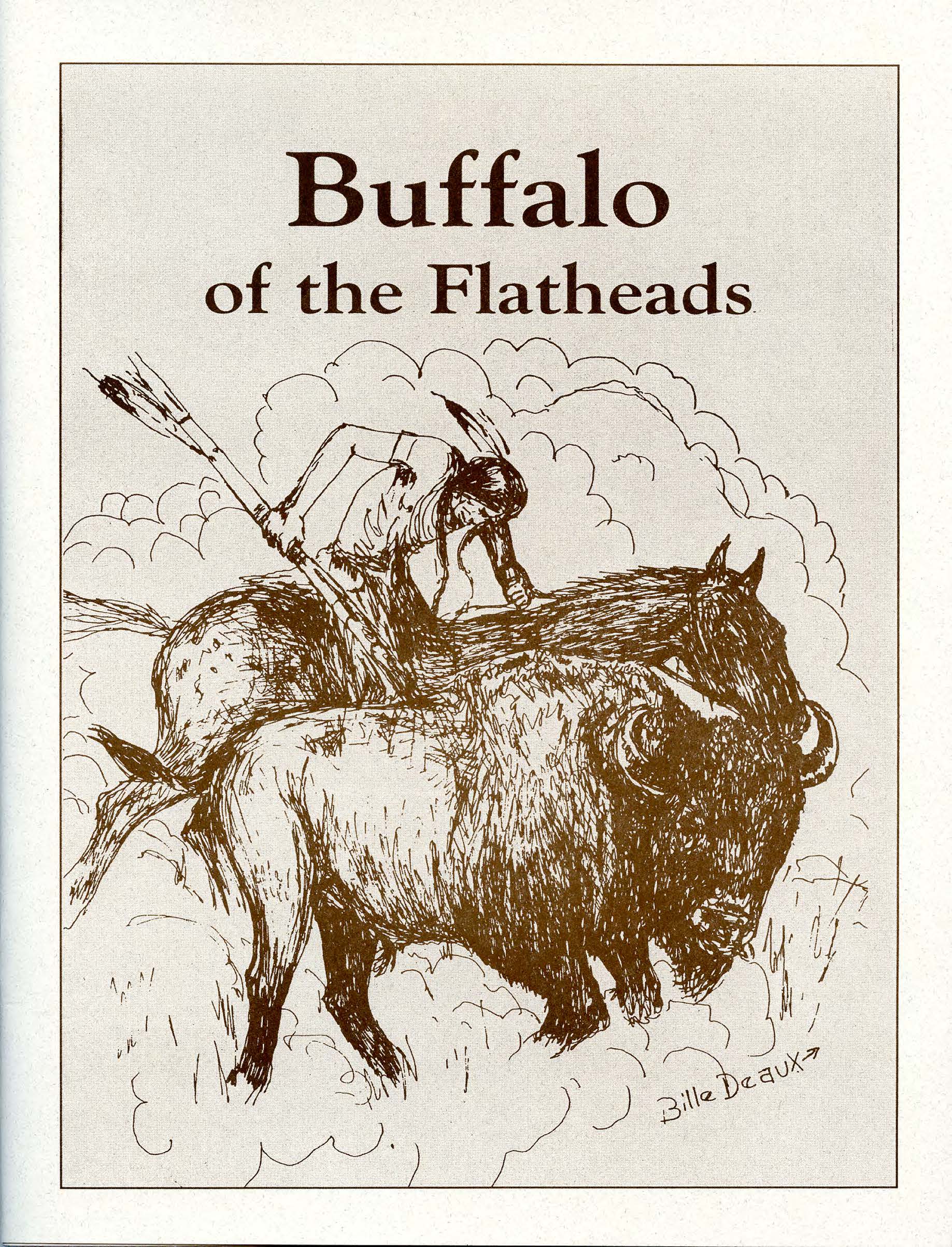 Buffalo of the Flatheads63 pages. 8X10. Includes; When the Buffalo Were First Seen Passing Through the Bitterroot, Medicine Man Helps Buffalo Hunters, How the Buffalo was Used, Coming of the Buffalo to the Reservation, The Pablo-Allard Herd, The Bison Range.
$5.00 |
|
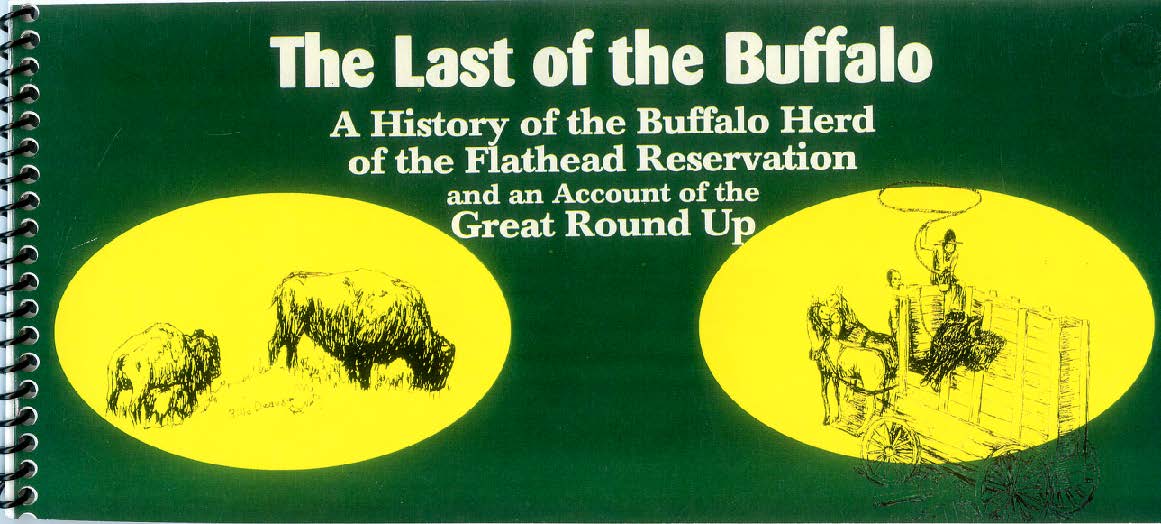 The Last of the Buffalo32 pages. 5X11. A history of the buffalo herd of the Flathead Indian Reservation and an account of the Great Round Up.
$5.00 |
|
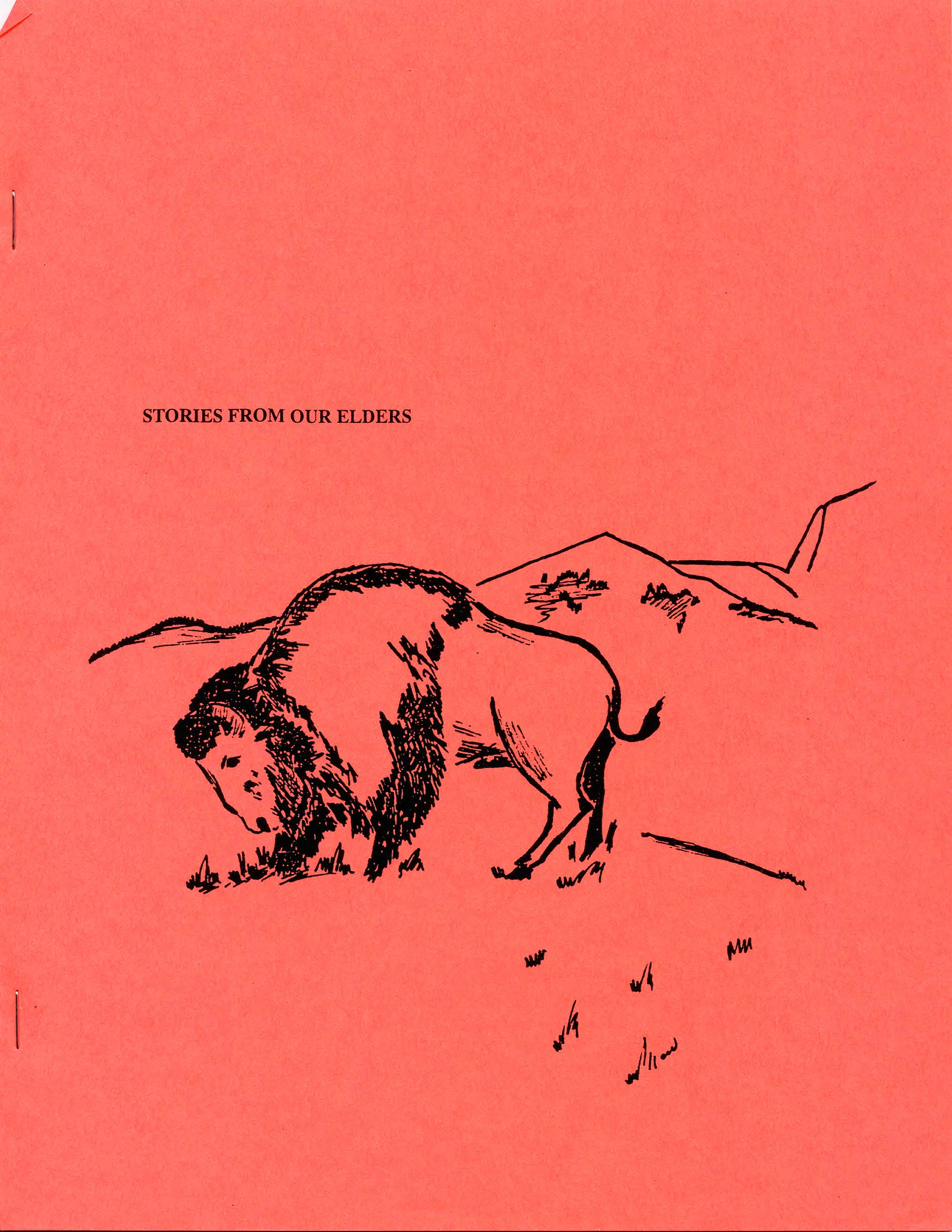 Stories From Our Elders80 pages. 11X8.5 This booklet contains short Coyote stories told by Pete Beaverhead and Agnes Vanderburgto the Culture Committee with an introduction of how Coyote and Fox received their powers and direction from their Mother. Told by Blind Mose Chouteh. To be told only in the winter months.
$5.00 |
|
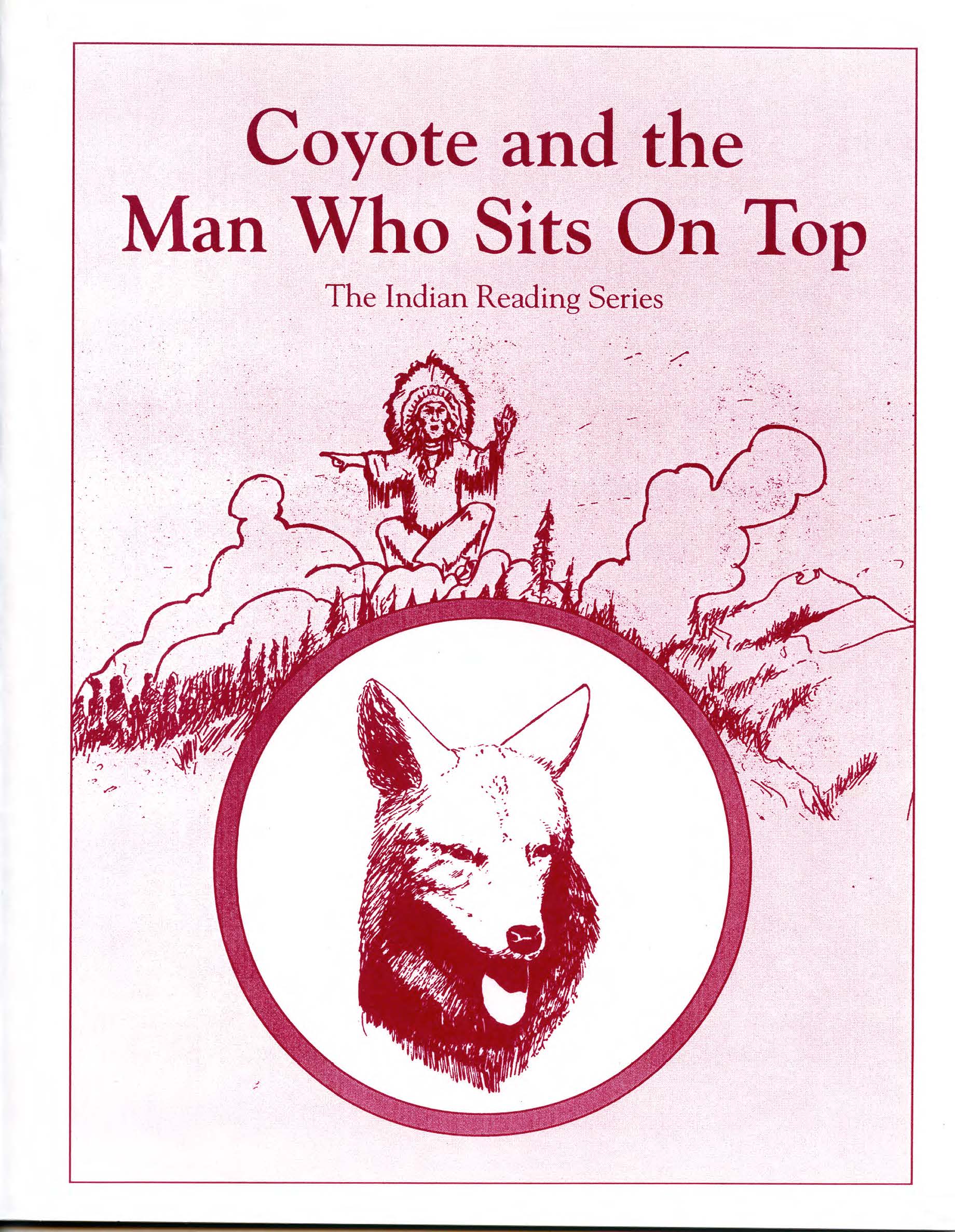 Coyote and the Man Who Sits On Top8x15. 15 pages. Salish-Pend d'Oreille Coyote Story told by Johnny Arlee. Part of The Indian Reading Series.
$5.00 |
|
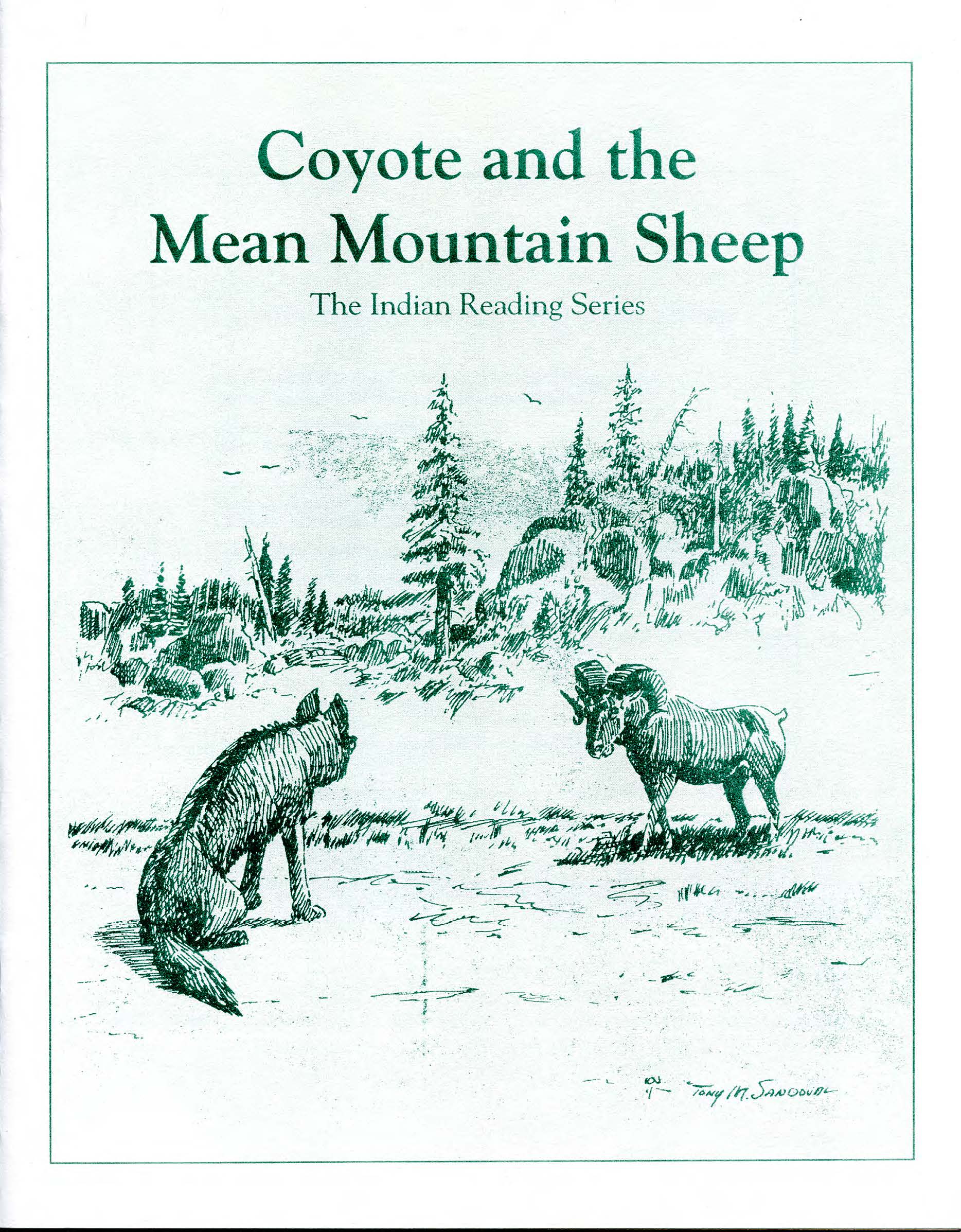 Coyote and the Mean Mountain Sheep8x15. 13 pages. Salish-Pend d'Oreille Coyote Story told by Johnny Arlee. Part of The Indian Reading Series.
$5.00 |
|
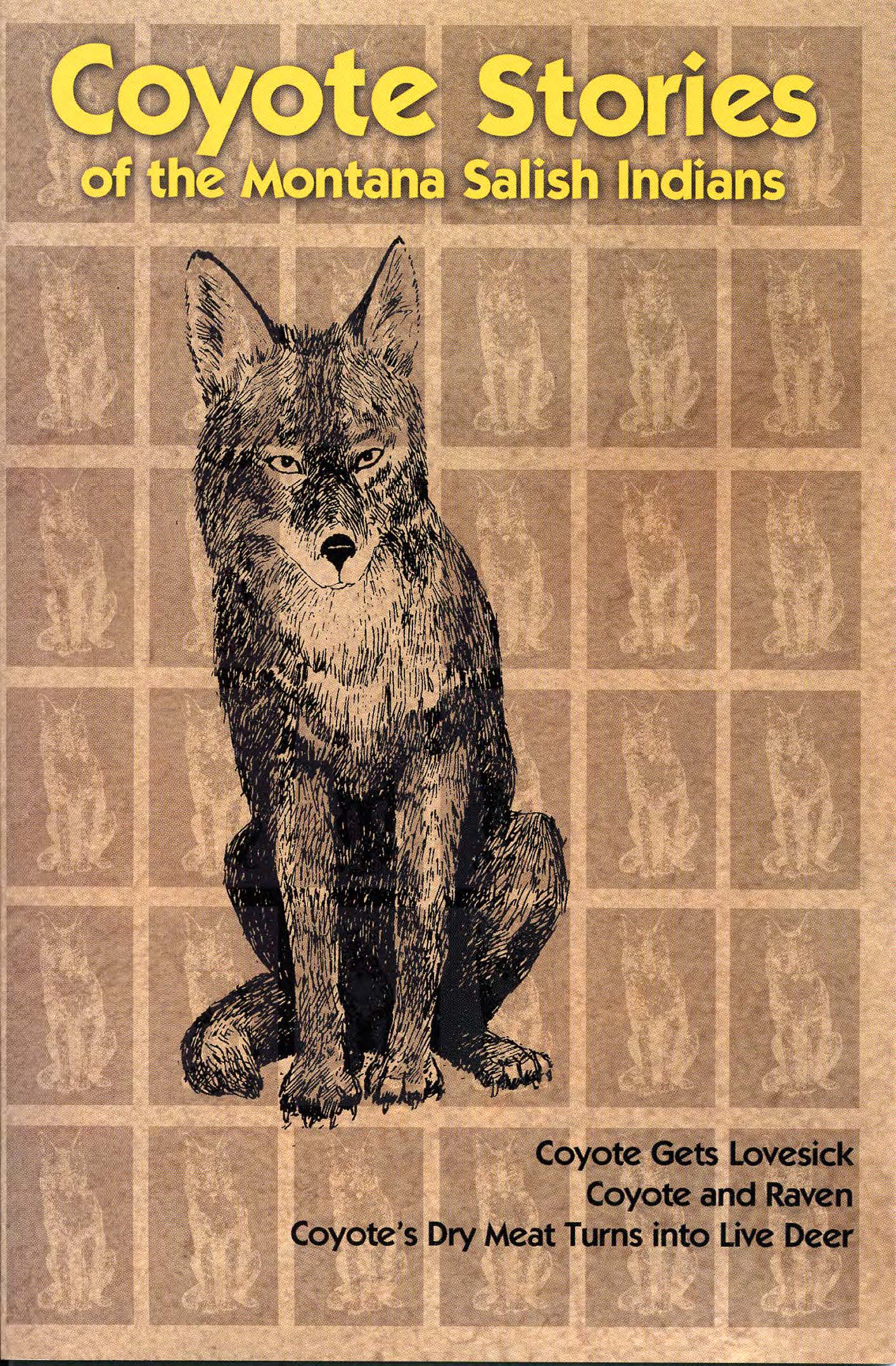 Coyote Stories of the Montana Salish5X8 62 pages. Traditional Salish Indian Coyote Stories, recorded by Salish Eldersand illustrated by Indian artists from the Flathead Indian Reservation. Includes; Coyote Gets Lovesick, Coyote and Raven and Coyote’s Dry Meat Turns Into Live Deer.
$7.50 |
|
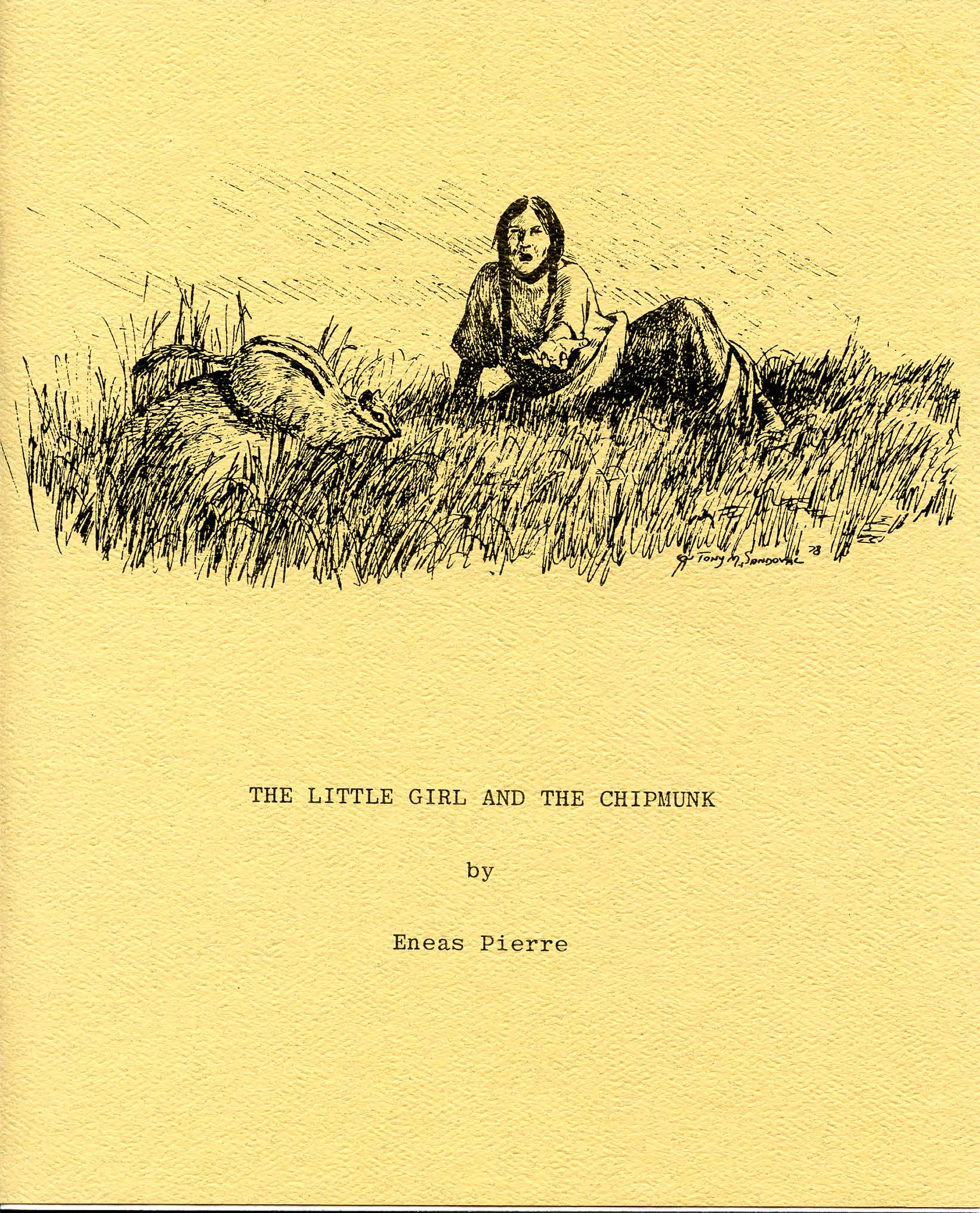 The Little Girl and The Chipmunk26 pages. 7X8.5. A short story about a young girl.Told by Eneas Pierre.
$5.00 |
|
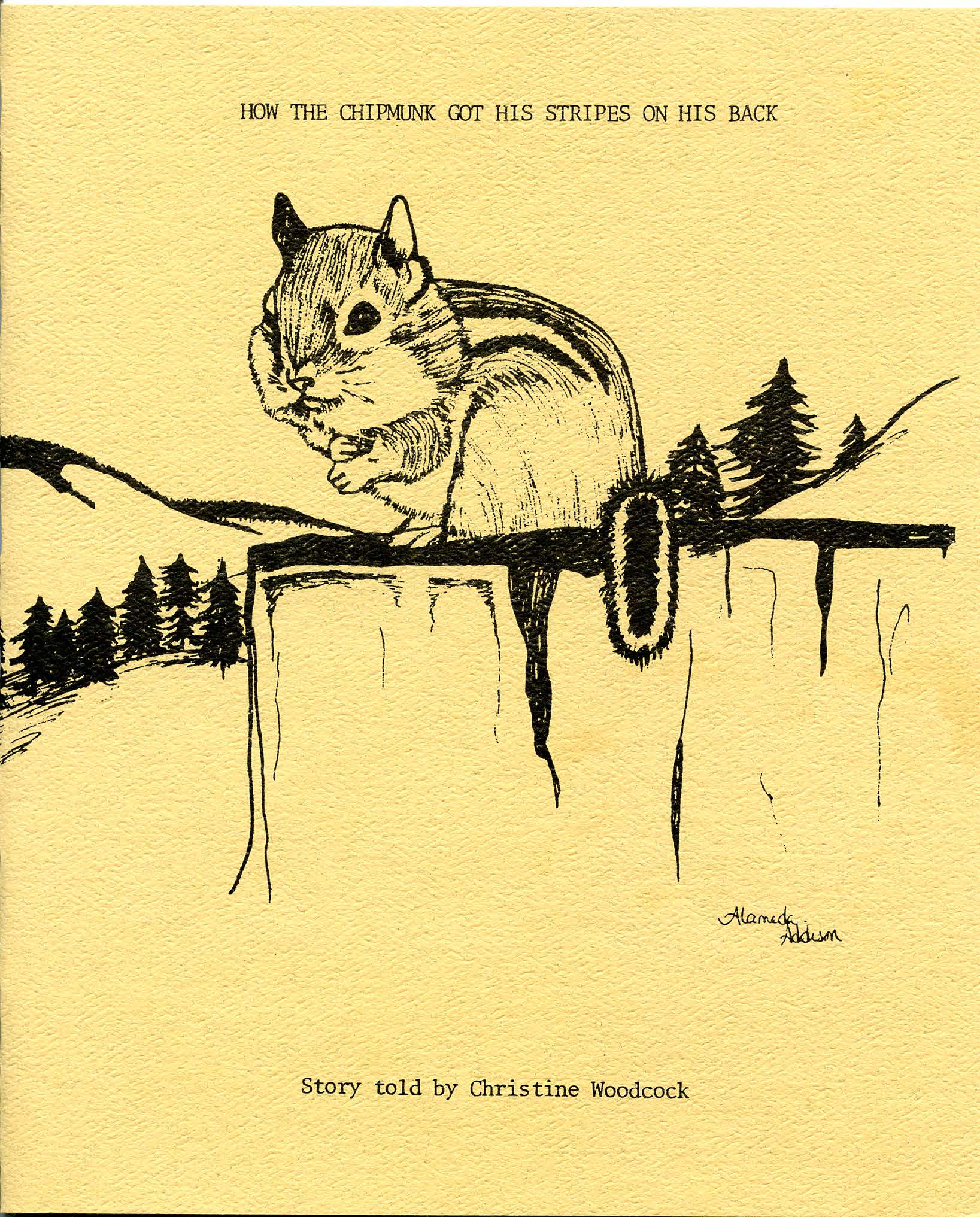 How The Chipmunk Got His Stripes On His Back17 pages. 7X8.5. Short story told by Christine Woodcock.
$5.00 |
|
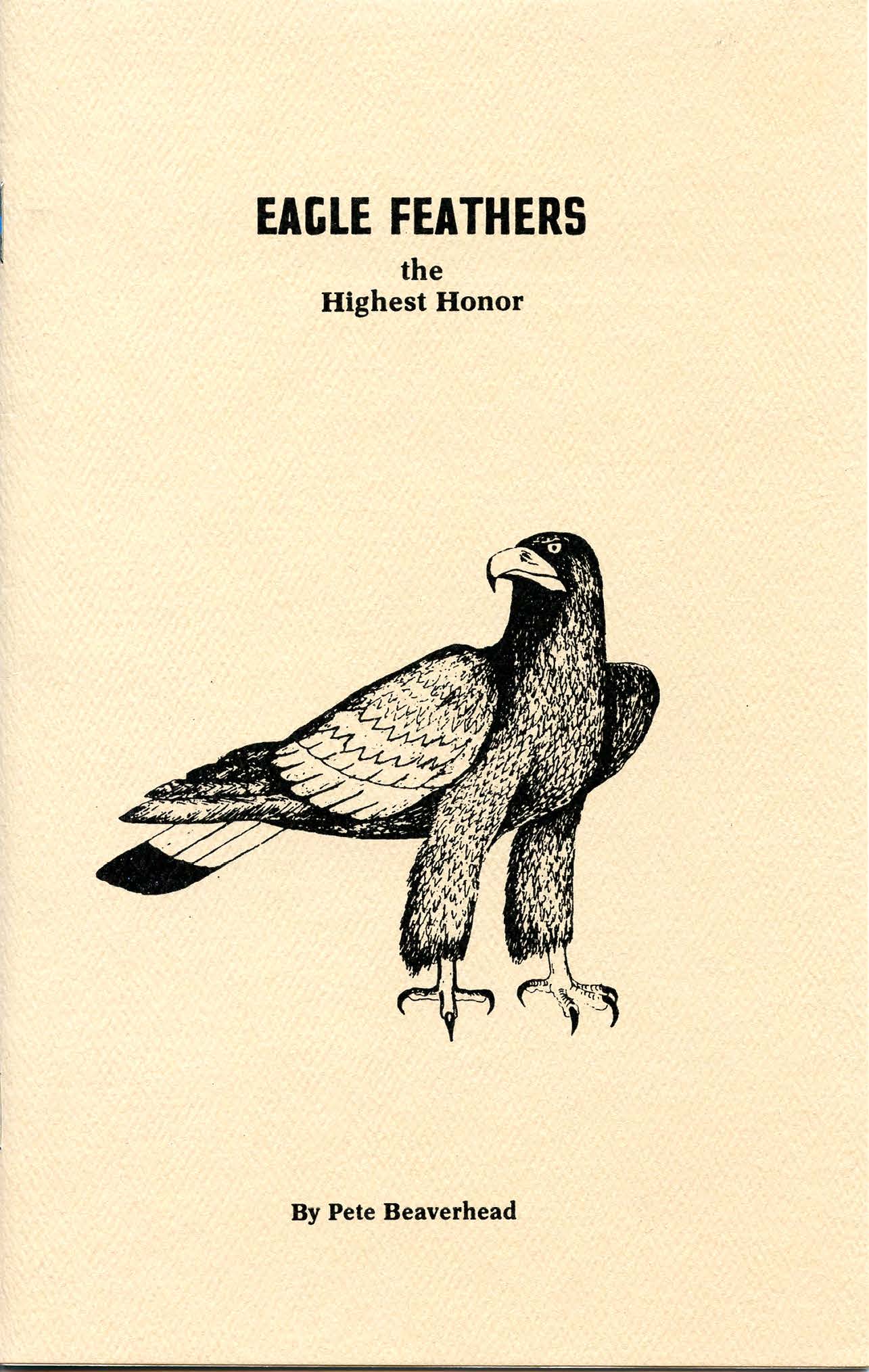 Eagle Feathers: The Highest Honor15 pages. 5.5X8.5. Pete Beaverhead tells us the importance and respect of the Eagle Feather.
$5.00 |
|
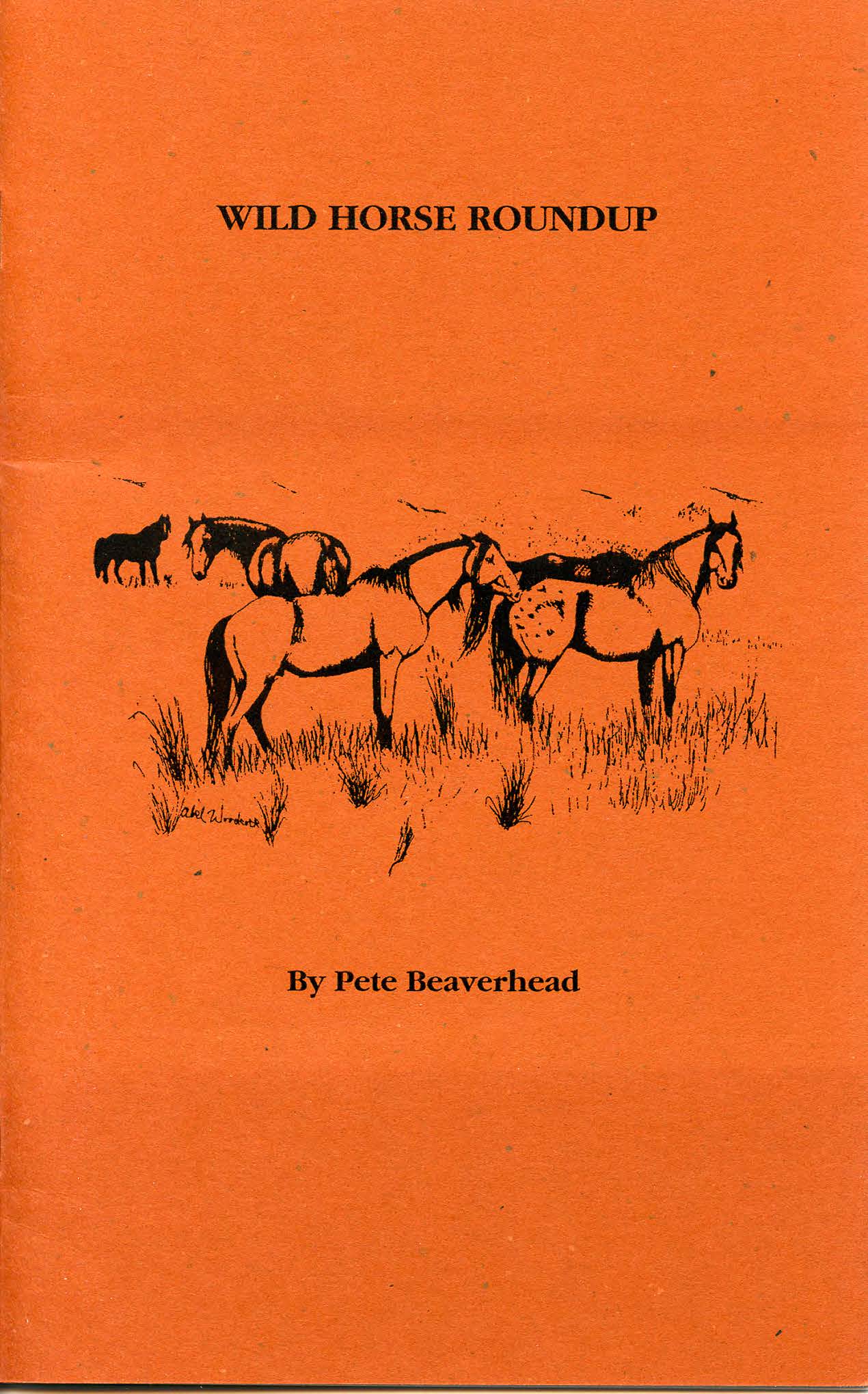 Wild Horse Roundup13 pages. 5.5X8.5. Told By Pete Beaverhead. Story about the wild horses on the reservation.
$5.00 |
|
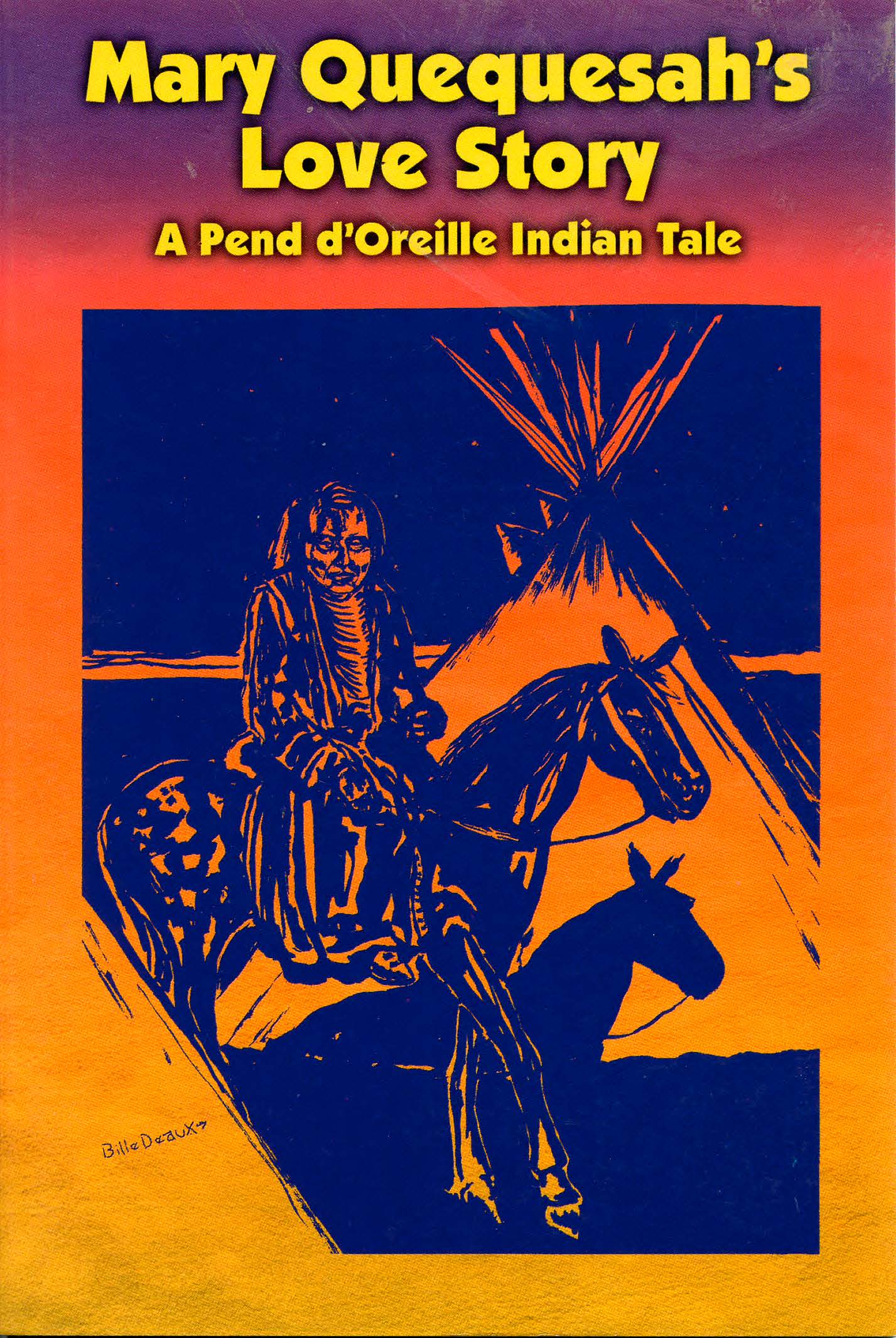 Mary Quequesah’s Love Story24 pages. 9X6. Told by Pete Beaverhead. In Mary Quequesah’s Love Story, a tale from the buffalo-hunting era ofthe nineteenth century, Mary confronts the difficulties of love. After Mary’s husband leaves her, a wise old woman dreams of her sorrow and tells her how to win him back.
$5.00 |
|
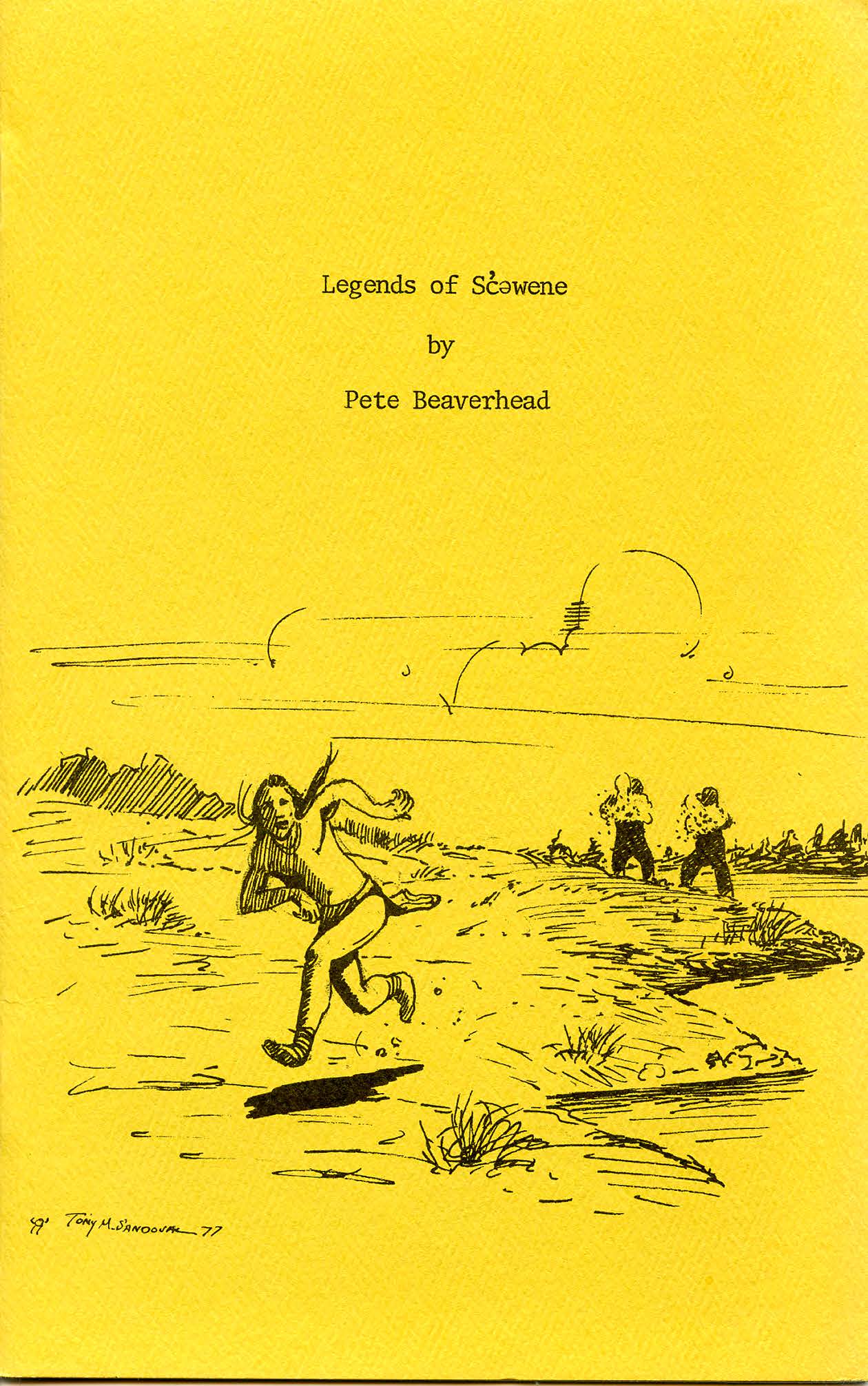 Legends Of Scewene14 pages. 5.5X8. A short story told by Pete Beaverhead about two ape-like beings known as scewene.
$5.00 |
|
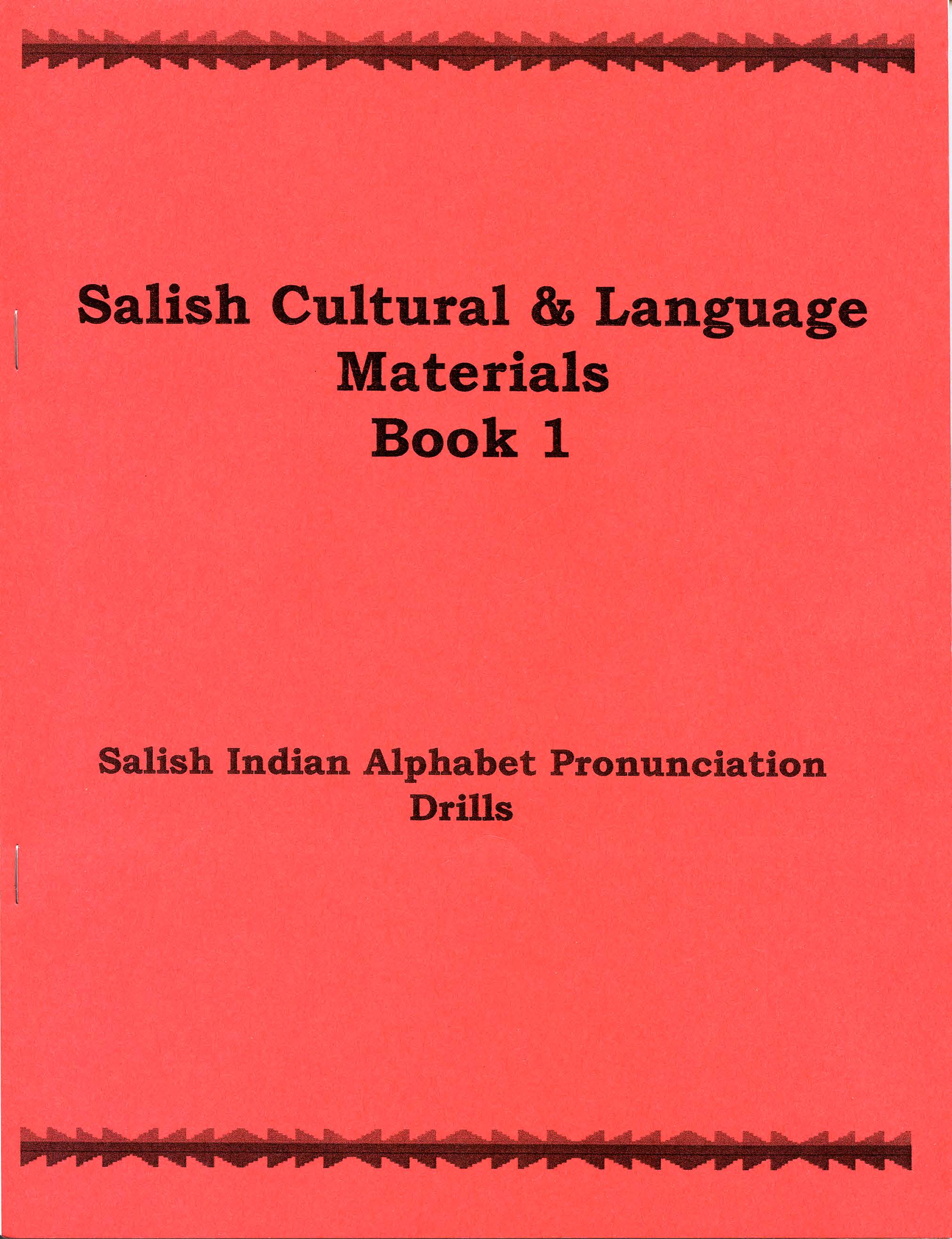 Salish Cultural & Language Materials Book 1: Salish Indian Alphabet Pronunciation Drills51 pages. 8.5X11. This book consists of a sequence of pronunciation drills accompanied by phonological explanations and a set of CD’s.
$5.00 |
|
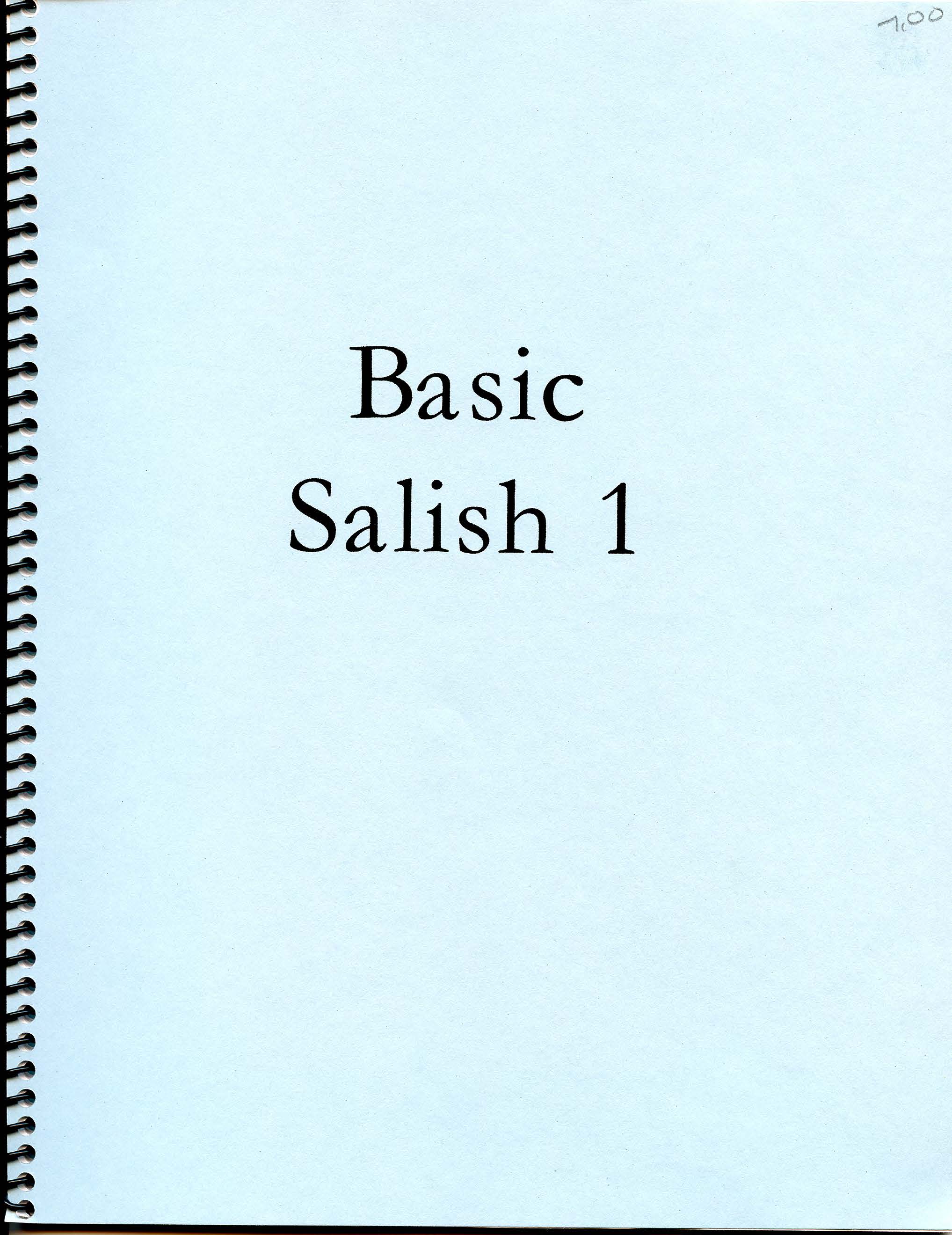 Basic Salish1.34 pages. 11X8.5. Produced by Clarence Woodcock. 1983. Revised 2006 by Shirley Trahan. Alphabet and Basic Vocabulary.
$5.00 |
|
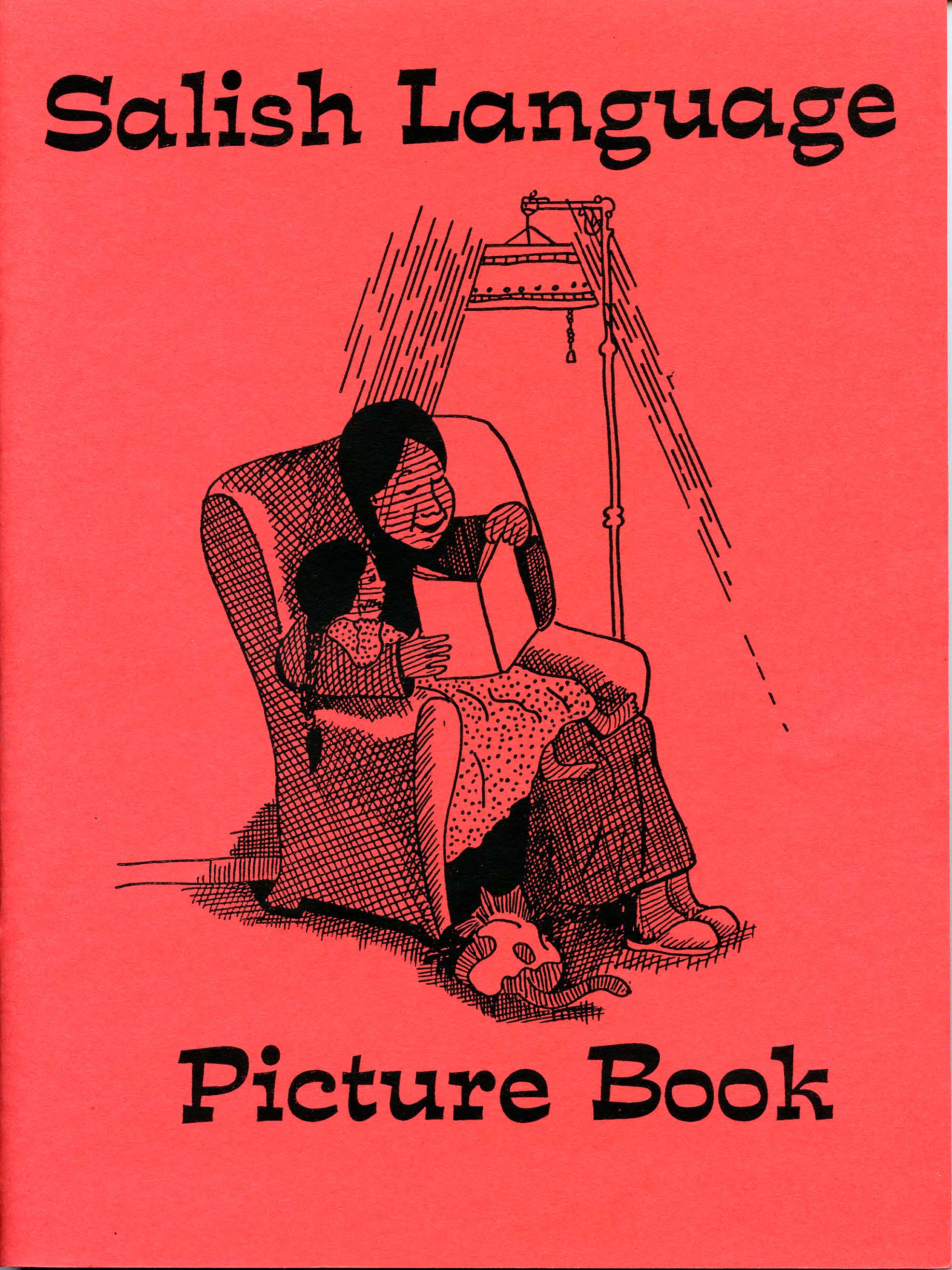 Salish Language Picture Book11X8.5. 64 pages. A picture book dedicated to the children with basic Salish and English words. Also a coloring book.
$5.00 |
|
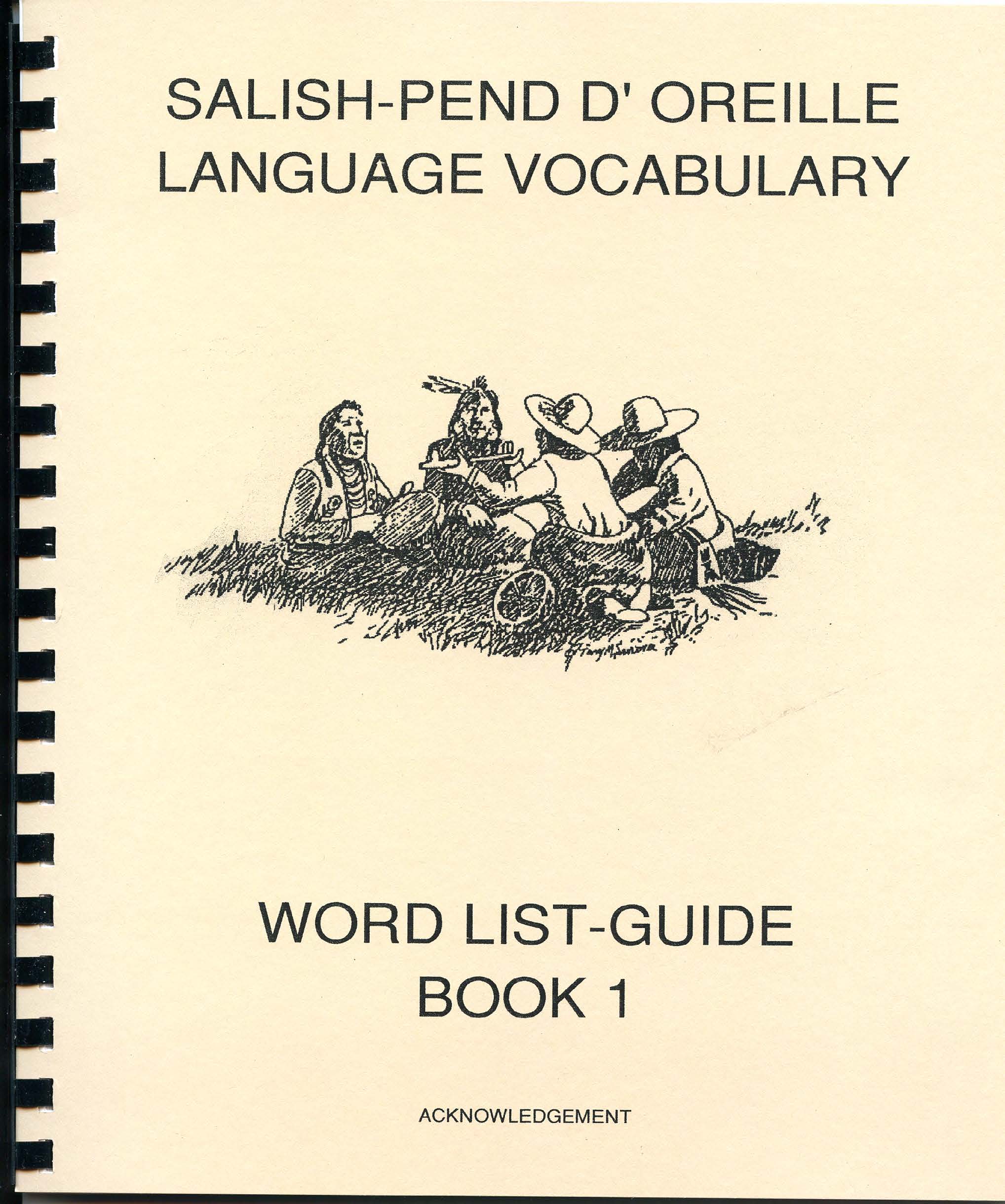 Salish Pend d’Oreille Language Vocabulary11X8.5. 72 pages. Word List Guide Book 1. A very brief dictionary-like word list.
$5.00 |
|
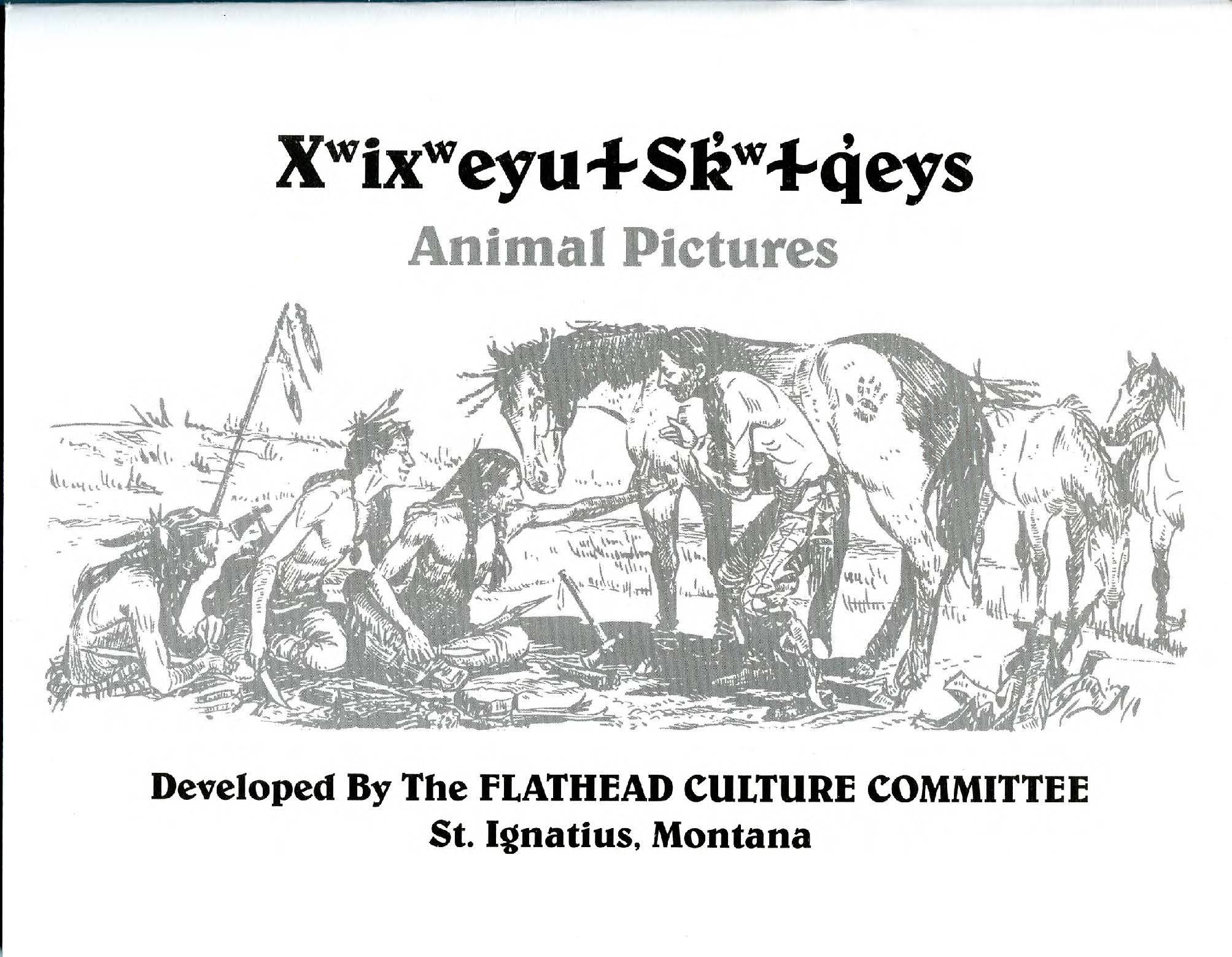 Animal Pictures50 pages. 11X8. Black and white animal pictures with the Salish name. Also can be used for children’s coloring book.
$5.00 |
|
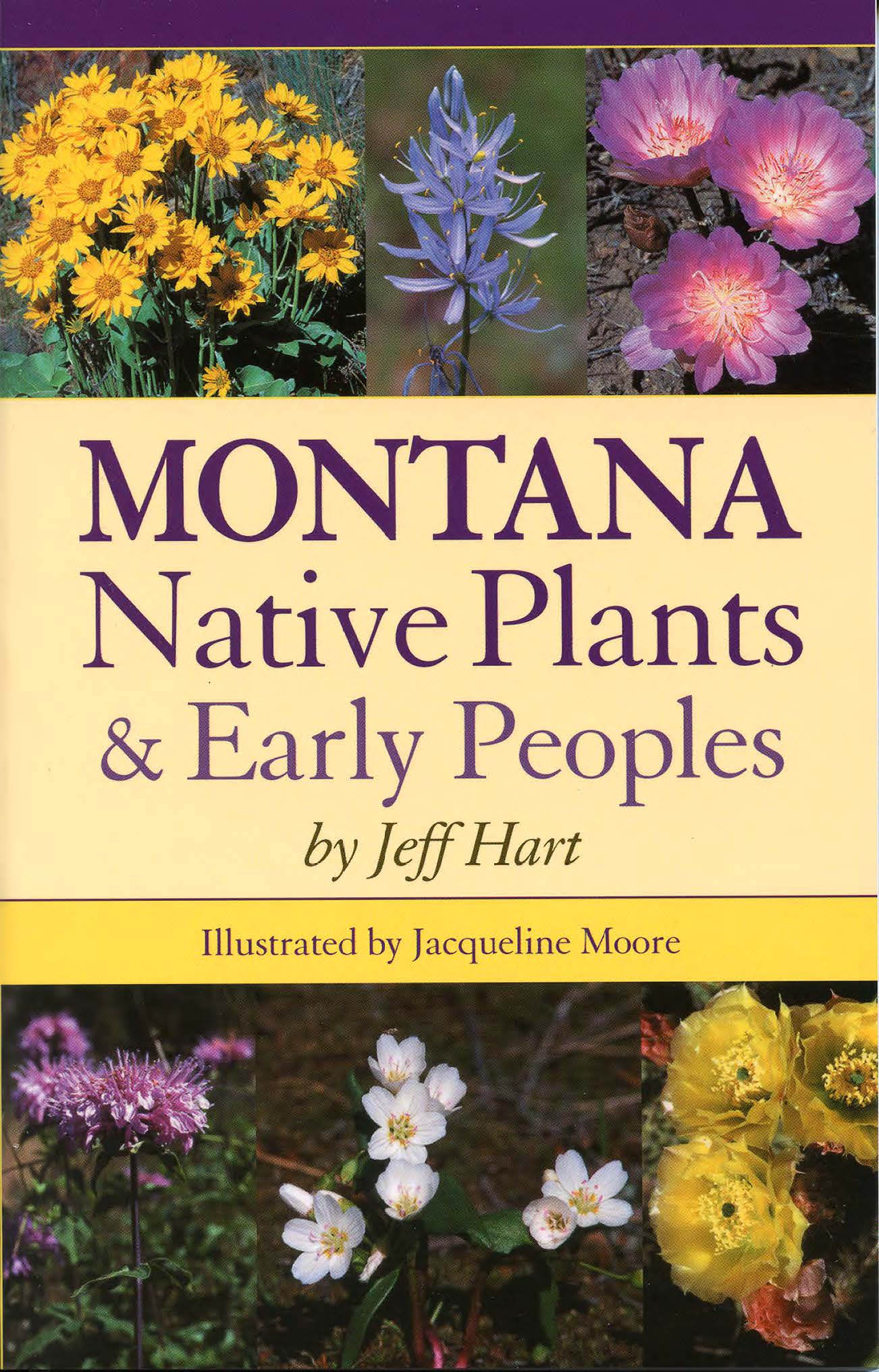 Montana Native Plants & Early Peoples by Jeff Hart152 pages. 8.5X5.5 This book describes early uses of plants, especially for food and medicine, by Indian and non-Indian inhabitants.
$5.00 |
|
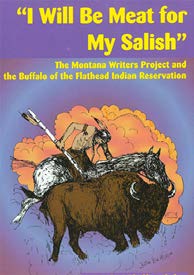 I Will Be Meat for My Salish217 pages. 6x9. The Buffalo and the Montana Writers Project Interviews on the Flathead Indian Reservation. This Book provides an authentic window into the life on the Flathead Indian Reservation and pre-reservation Salish history-and particularly the Salish relationship to the buffalo-through oral interviews conducted in the 1920s and 1930s and preserved by the Montana Writers Project.
$6.00 |
|
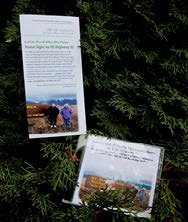 Salish-Pend d'Oreille Place Name Signs on US Hwy 93CD and Brochure. In 2006, as part of the reconstruction of U.S. Highway 93 through the Flathead Indian Reservation, the Confederated Salish & Kootenai Tribes arranged with the Montana Dept. of Transportation for the erection of a series of unique signs. These signs inform the travelers of some of the many Salish-Pend d'Oreille and Kootenai place names in the Jocko and Mission Valleys. The brochure explains the Salish-Pend d'Oreille names along the road. Put in the CD and join Tony Incashola as he relates the correct pronunciation of each place name, its translation in English, and the meaning in Salish-Pend d'Oreille culture and history.
$6.00 |
|
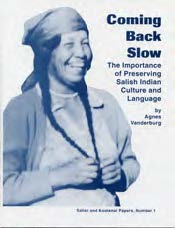 Coming Back Slow12 pages, 11x8.5 The Importance of Preserving Salish Indian Culture and Language. By Agnes Vanderburg.
$5.00 |
|
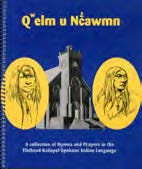 Qwelm U Ncawmn72 pages. 7x8.5 A collection on Hymns and Prayers in the Flathead-Kalispel-Spokane Indian Language. Compiled by Johnny Arlee.
$8.00 |
|
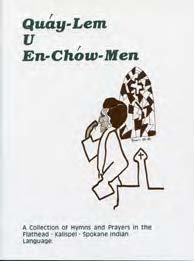 Quay-Lem U En-Chow-Men60 pages. 8.5x11 A collection on Hymns and Prayers in the Flathead-Kalispel-Spokane Indian Language.
$8.00 |
|
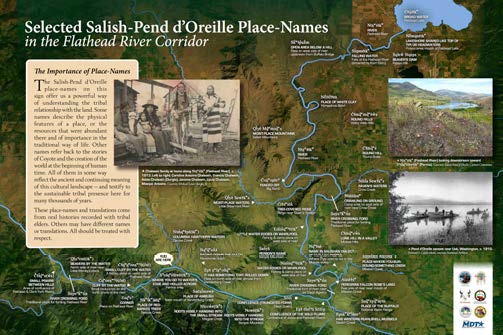 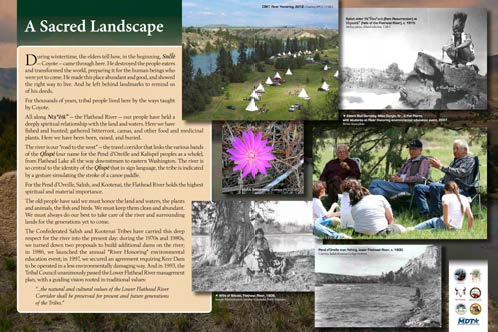 3' x 2' posters of historical markers at Perma.These two full-color posters are replicas of two historical markers written by the SPCC and placedon the north side of the Perma bridge in 2013. The first sign, "A Sacred Landscape," describes the traditional and continuing importance of the Flathead River for the Salish and Pend d'Oreille people. The second sign features a map of the river from Polson to Paradise with Salish place names all along it. Both signs feature a rich mix of historic and contemporary images, illustrating the connection between past, present, and future. These posters are the first in a series replicating historical markers written by the SPCC and in place(or soon to be in place) in many parts of the aboriginal territories.
Call for pricing. 406-745-4572 |
|
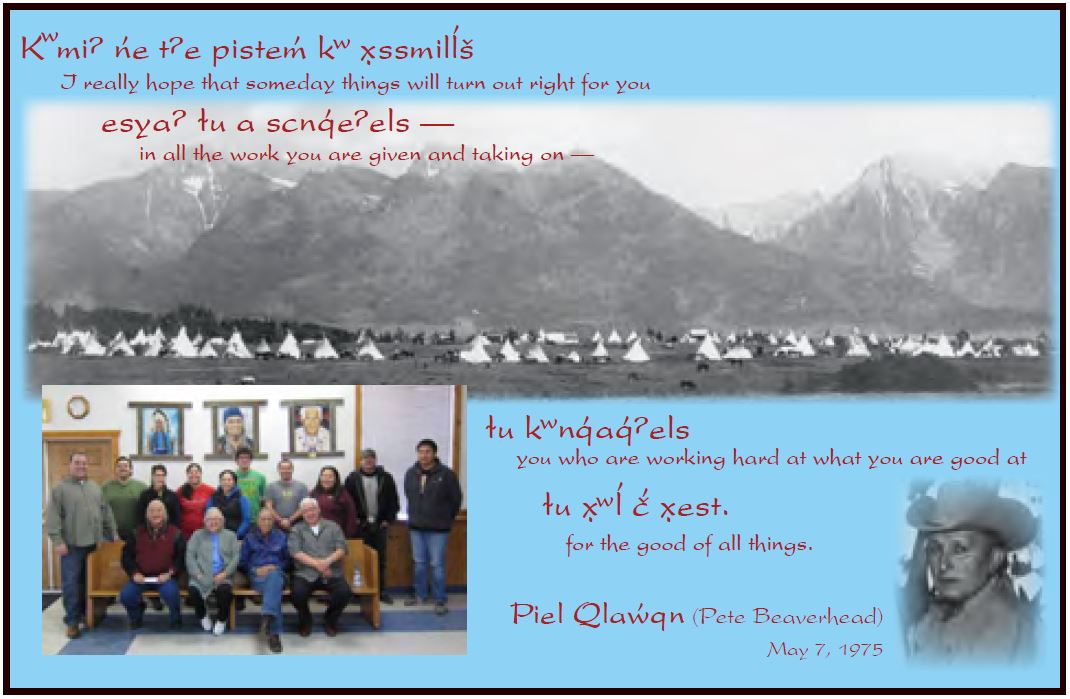 "For the Good of All Things" PosterThis poster is the first in a new series featuring inspiring quotations from the SPCC's recordings of tribal elders, and conveying young people today carrying on Salish and Pend d'Oreille language and cultural ways. This poster features illustrations of a celebration at the foot of the Mission Mountains in 1908, the 2013-14 Salish Language Immersion Class, and the author of the quotation, Pete Beaverhead.Pete says: K͏ʷmiʔ n̓e tʔe pistem̓ k͏ʷ x̣ssmill̓š / I really hope that someday things will turn out right for you / esyaʔ ɫu a scnq̓eʔels — / in all the work you are given and taking on — / ɫu k͏ʷnq̓aq̓ʔels/ you who are working hard at what you are good at / ɫu x̣ʷl̓ č̓ x̣est. / for the good of all things.
Call for pricing. 406-745-4572 |
Salish language is our most urgent area of work. It is the core of our culture. If the language is lost, a crucial part of our way of life will go with it. Unless we make a determined, aggressive effort to save it, Salish will become one of the ninety-eight percent of native languages that will soon become extinct. If our language is to survive, we must add to our rapidly dwindling numbers of fluent speakers. It is critical that younger tribal members learn and gain fluency.
|
language-guide.pdf
Popular 5.18 MB |
12/12/2023 21:06:18 |
Resources
1008 Swan Valley Massacre
According to the 1855 treaty, the confederated tribes retained the right to hunt, gather, and fish in their aboriginal territory, some of which was outside the reservation boundaries. This practice came into conflict with the state law after Montana acquired statehood in 1889. It established its own hunting and fishing regulations to be enforced by game wardens. Only the federal government had jurisdiction within reservation borders, but in other parts of the state, officials believed they had authority to regulate Native Americans as well as non-Native Americans.
In September 1908 a party of eight Pend d’Oreilles entered the ancient hunting grounds of the Swan Valley on the eastern side of the Mission Mountain range. The party members included Atwen Scwi, his wife, son, and daughter; Little Camille Paul and his wife who was pregnant; and two elders, Mary and her husband Martin Yellow Mountain. Before they had left the reservation, they purchased state hunting permits to avoid trouble, although this was not required under the Hellgate Treaty. (Yellow Mountain cleared permission for the expedition from the agent in Arlee).
In October, after they had camped for several weeks, Charles Peyton, a state game warden, together with a few deputized residents of the valley, entered the encampment three times to investigate the hunting party. He demanded hunting licenses and harassed the band. Peyton returned the next day with guns drawn, and demanded that the Pend d'Oreilles leave by the next morning. To avoid confrontation, the band decided to move and began to pack up the camp.
The next day, before they could pack and mount their horses to leave Peyton arrived along with his deputy firing his gun.
He shot Camille Paul and Atwen, the two leaders of the party, who were unable to reach their guns. When Yellow Mountain tried to reach his weapon, Peyton shot him as well. As the women fled toward the edge of the clearing, Peyton chased them. Atwen’s son Peh-lah-so-weh found a gun and shot Peyton, hitting him in the stomach. The warden’s deputy Herman Rudolph shot Peh-lah-so-weh at the same time, killing him almost instantly.
As the women tended to the dead and dying members of the party, Peyton began to get back up. Camille’s wife, Clarice, fearful that Peyton would try to kill the rest of them, pulled her husband's rifle from under his body and shot twice at Peyton, leaving him dead.
Six months pregnant, Clarice rode to another Pend d’Oreilles camp to seek help. When she arrived, the band of Many Names (Louie Mollman) took her in and tended to her. When Many Names’ party returned the next day to recover the bodies, they encountered a non-Indian posse. Many Names warriors restrained from attack.
Salish Removal to the Jocko Valley
In the Hellgate Treaty of 1855, Xʷełx̣ƛ̓cin (Plenty Horses or Chief Victor) and the Salish people insisted on staying in their homeland, the Bitterroot Valley. The treaty guaranteed the Bitterroot for them unless the President decided, on the basis of a survey, that the Flathead Reservation was "better adapted to the wants of the Flathead Tribe." Although the required survey was never conducted, President Ulysses S. Grant declared in 1871 that the Salish had to be "removed" to the Reservation. By this time, Słmx̣e Q̓ʷox̣qeys (Claw of the Small Grizzly, or Chief Charlot) had succeeded his father, Xʷełx̣ƛ̓cin, as Head Chief, but he stuck to Xʷełx̣ƛ̓cin's position of peacefully resisting removal from the Bitterroot. So when the U.S. sent officials to Montana in 1872, Słmx̣e Q̓ʷox̣qeys said this was where the bones of his ancestors were buried, and he would not leave. Congress never knew of the Chief's refusal to sign, however, because the negotiator, future U.S. President James Garfield, forged the "x" mark of Słmx̣e Q̓ʷox̣qeys onto the agreement. Non-Indians called Słmx̣e Q̓ʷox̣qeys a treaty breaker until this outrageous forgery was proven to be true by Senator G.G. Vest in 1883.
However, two sub-chiefs, Arlee and Ninepipes, decided it would be best to move. They left the Bitterroot Valley in 1873, accompanied by a few families, and moved to the Jocko. The U.S. treated Arlee as Head Chief, giving him a house and a small stipend, which only deepened the anger and distrust of Słmx̣e Q̓ʷox̣qeys toward the Government. Then the Northern Pacific Railroad was constructed thru the Reservation in 1883, they named the depot in the Jocko "Arlee," and this remained the name of the town, which got its first post office in 1901.
The majority of the Salish, meanwhile stayed in their ancestral Bitterroot Valley under the leadership of Słmx̣e Q̓ʷox̣qeys. White settlers began to crowed in around them, even though these incursions were not allowed by the terms of the Treaty. As a result, the tribe became more poor. Nevertheless, when Chief Joseph's band of Nez Perce came through the valley during the 1877 war, the Salish refused to join their long-time friends and relations, and instead defended the settlements. Despite this, non-Indians and the Government only increased pressures on the Salish to leave the Bitterroot, which was considered some of the best agricultural land in Montana. Słmx̣e Q̓ʷox̣qeys repeatedly refused to move.
After the Missoula & Bitterroot Valley Railroad was built in 1888, white settlement began to increase more rapidly, and in November 1889, faced with worsening conditions for his people, Chief Charlot finally agreed to move. He secured guarantees of housing and other material help for the people once the relocated to the Reservation. Told that they would be moving right away, the Salish did not plant props in the spring of 1890. Congress appropriated no funds for the removal, so the people remained in the valley--but now without the food they would have normally raised. The same ting happened the next year, as Congress continued its patrons malign neglect. Throughout 1890 and 1891 Salish people sold their stoves and other house hold belongings in their struggle to get enough to eat. Finally in october 1891, General Henry B. Carrington and a contingent of troops from Fort Missoula roughly uprooted the people from Stevensville area and marched them north to the Reservation.
Many elders, including Sophie Moiese and Mary Ann Combs have related the sadness of the journey and the rough way people were treated by troops. One woman, Mrs. Lumpry, fell off her horse and broke her hip, and was crippled for life. Mrs Combs recalled that after the two day journey, the people camped near Evaro called Nłesletkʷ (Two Creeks). The people pulled them selves together, and led by young men riding out ahead on their horses, the Salish came into the Jocko Valley. A large group of Pend d'orville and other tripbal people awaited them at the Jocko church, and welcomed them to the Reservation. It is said the Salish settled at the southern end of the Reservation because they did not wish to move any further north than they had to. So the homes of Słmx̣e Q̓ʷox̣qeys, Sam Resurrection, Sophie Moiese, the Vanderburgs and many others were spread between Snłiʔoyčn (Evaro), Snłaʔcná (Schley), Nłqá (Arlee) and łqʷqʷʔú (Valley Creek). Some Salish families, notably the Pierres, moved back to the Bitterroot after 1891.
Despite the pain and loss of removal, the Salish quickly rebutlt their lives on the Reservation, establishing many successful family farming and cattle operations. They did this even thou the Government reneged on many of its promises of help.
Ten years after the removal the Salish and the Governments solemn promise that the Reservation would always be a protected home for the people, free from harassment, congress passed the law that would open the Flathead Reservation to white settlement. Tribal members, including Chief Charlot and Sam Resurrection, repeatedly protested this law, but to no avail. In 1910, the homesteaders poured in to the Reservation, taking much of the best land. The Flathead Irrigation Project was built, often over pre existing Indian built ditches, and suddenly Tribal farmers had to pay for water they had always used for free. Many small operation had produced food only for subsistence needs, and families couldn't pay these new fees. Many Tribal allotments were sold to non- Indians before the Allotment Act was cancelled in 1934.
The Salish survived all this, and Arelee today is the home to a vibrant Salish community. Salish homes are found throughout the area. In the arlee schools, Salish language classes have been taught for many years now to the many Salish students. The Vanberberg Culture Camp at Valley Creek was founded by Agnes Vanderburg in 1974 and run by her until her death in 1989. Th camp is now run by her daughter Lucy and son Victor, and was opened to all interested people from June thru August for hunting, fishing, camping, solitude and gathering of foods and medicines.
Dixon
cłsusuw̓e (Black Lake) flows through to Jocko River which flows to meet with the Flathead River in Dixon. Tribal elders Mike Durgelouh sr., John Peter Paul and Noel Pichette talked about the nšiy̓e (little river), ntx̣ʷe (big river) meeting in Dixon thats why its called sčili or sčilip. There is also a story about čt̓et̓ʔu(wild plums) growing along Flathead River in Dixon, below the town. Mike Durgeloh says the plums used to grow where the old bridge used to be.
John Peter Paul says there are little čmtus(green plums), you pick before they are ripe like you do tomatoes and they eventually ripened on their own. John remembers his mother, Clarice Paul, and their family, and picking wild plums for a couple days.
After the Northern Pacific Railroad was built through the Reservation over the objections of tribal leaders in 1883, a depot was built at this place, and it was known as Jocko City. In 1904 it was renamed Dixon after Rep. Joseph Dixon, a Missoula Republican who that same year had pushed the Flathead Allotment Act through Congress. The Act required the Government to break up tribally owned land by drawing up an official roll of tribal members and assigning separated tracts of land to heads of families and other individuals. Any land leftover would be declared as surplus by the government and thrown open to white settlement. Tribal members and Chiefs including: Chief Charlot, Chief Qeyqeyši, and Sam Resurrection, briefly protested the Actas an outrageous breaking of the Hellgate Treaty of 1855, and many subsequent promises (the Garfield Agreement of 1872, the Railroad Agreement of 1882 and the Removal of Salish in 1891). All of which agreements guaranteed that the Reservation would be for the exclusive use and benefit of the Confederated Salish and Kootenai Trabes. Dixon, prodded on by business interests in Missoula,pushed the bill through without getting the tribal approval. In 1908, he also pushed through a measure to establish the Flathead Irrigation Project, who's principal purpose was supposed to be the benefits the Tribes. However, most irrigated lands quickly fell into non indian ownership control after the Reservation was finally opened in 1910. Dixon went to serve as national manager Teddy Roosevelt's, unsuccessful "Bull Moose" campaign in 1912, and later was elected Governor of Montana.
Warriors and Tirbal Leadership
In our traditional way of life, we were led by chiefs, who were selected by our leaders and elders. Each tribe had a head chief, a sub-chief, and several small chiefs to handle matters of importance. If the tribe divided, the head chief took charge of one group and the sub chief took charge of the other. The small chiefs regulate the welfare of the camp, the safety and comfort of the people, and proper conduct regarding camping, firewood, horse heard, scouting, hunting and guards. Leadership was chosen not on the basis of wealth, but accrding to a warrior's deeds of courage and leadership on behalf of the people. The hunt for buffalo and welfare with the Plains tribes, especially in the 19th century, made life very hazardous for the Salish and Pend d' Oreille, and it increased the leadership role of our warriors. The tribes we fought against regarded Salish and Pend d' Oreille warriors as some of their most formidable opponents. According to stories told by Pete Beayerhead, the counting of coup was a high war honor for the Salish and Pend d' Oreille men, and this, along with other factors, determined the selection of chiefs.
Documents
